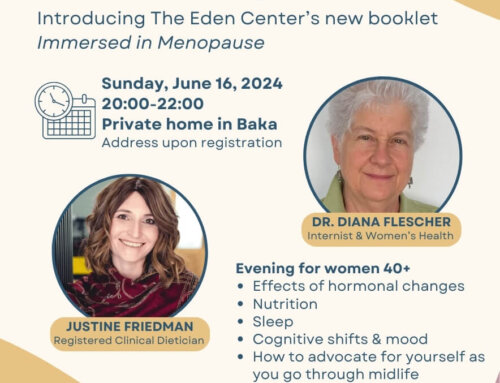
“Mazel tov to the newly engaged couple”! After the toasts and good wishes are finished, the fun and (sometimes) stress of planning the wedding will begin. Finding a date that works for both sides and the perfect venue for a wedding can be a challenge for all couples. But religious couples face the added stress of choosing a wedding date that avoids a chuppat niddah (bleeding that causes the bride to be a niddah at the wedding ceremony).
Kallot (brides) are often immediately started on birth control to manipulate their cycles to avoid a chuppat niddah. However, like all medications, hormonal manipulation needs to be carefully chosen after an appropriate medical consultation.
Like most things in life, the answer is not the same for every person. Not every kallah requires hormonal manipulation of her cycle to prevent chuppat niddah.
Moreover, in order to make an informed decision a kallah must not only understand her reasons for choosing a particular type of birth control, but must also understand the risks and benefits, the potential side effects and the alternative options available to prevent a chuppat niddah.
The pharmaceutical options described below are the most prevalent methods used to push off a woman’s period to prevent chuppat niddah. Each has contraindications to their use which the kallah must discuss with her medical provider before beginning treatment.
Kallot should be aware that it takes time for the body to adjust to the change in hormonal methods. It may take 3 pill packs until the bleeding cycle becomes regular and predictable without breakthrough bleeding. A kallah who chooses this method of contraception or intervention must give her body enough time to adjust to the medication when deciding on the wedding date.
The hormonal birth control methods release estrogen and progestin into the body. This can be done via different formulations of the birth control- the pill, the patch or the vaginal ring. In each case, pregnancy is prevented by preventing ovulation. This means that the release of an egg from the ovaries is prevented. Other effects include thickening of the cervical mucus (which makes it harder for sperm to enter the uterus) and thinning of the lining inside the uterus (which makes it less conducive to implantation of a pregnancy).
In addition to making a woman’s period more regular and preventing pregnancy, there can be additional benefits to using a combined estrogen and progesterone contraceptive. There is evidence that they may decrease the risk of uterine, ovarian and colon cancer. Some brands may reduce menstrual cramps, decrease bleeding and pain for women with fibroids and endometriosis, and improve acne. However, the benefits are not the same for all users.
It should be noted that some women may suffer from the side effects of using the combined hormonal birth control. These include headaches, nausea, breast tenderness and, most concerning for a kallah, breakthrough bleeding. The side effects of breakthrough bleeding can be mitigated by using certain formulations of the combined hormonal pill which have a better breakthrough bleeding profile.
The other available hormonal intervention is the progesterone only method. Progestin only pills (“mini-pills”) contain less progestin than the combination hormonal pills. They must be take taken at the same time each day in order to be effective. This method is difficult for women who are unable to stay on a schedule.
The progestin causes the mucus in the cervix to be thicker which makes it more difficult for sperm to enter the uterus and to fertilize the egg. It also makes the lining of the uterus thinner than usual, which makes it a less suitable environment for implantation to occur. The progestin only pill does not consistently stop ovulation. Some women who use this method will continue to ovulate.
The bleeding profile with this method can be very unpredictable. A woman may have shorter cycles of bleeding, spotting, heavy bleeding or no bleeding. For some women, these changes may get better with time. Other known side effects include breast tenderness, headaches and nausea, bloating and constipation.
Some kallot may desire the use of a form of progestin only pills if they wish to delay their cycle by a few days. In this case, the use of progestin would not be for contraception.
Before discussing hormonal options it’s important to take a step back and ask a few very important questions to see if the immediate impulse to give kallah a prescription for birth control is correct for the particular kallah seeking your advice. Important questions include:
- What is their desire for birth control?
- Does the couple want to start a family right away or do they want time to be together before they try and conceive a child?
- What is the kallah’s medical history and family medical history?
- Does she have risk factors that are either contraindications or relative contraindications to being on hormones?
- What is the kallah’s menstrual cycle history?
- Is there a particular date that the wedding must take place, or can the date be chosen after the kallah’s natural cycle is taken into account?
Bottom Line – The decision to use medications to alter a women’s natural cycle must take into account the patient’s medical history and if any contraindications exist to the use of these medications. A kallah with any of these risk factors should not risk her health.
If contraception is desired and a woman wishes to begin hormonal medications both to regulate her cycle and prevent pregnancy, it is advisable to begin at least 3 cycles prior to the wedding date.
If contraception is not desired (or if hormonal intervention is not medically advisable), planning a wedding date around a women’s own natural cycle may be less likely to lead to a chuppat niddah.








Hi,
I’m curious why the possibility of simply risking having a chupat nidda is not considered here, even if the kalla does not have known contraindications to hormone treatment? I know that that is awkward and suboptimal, but perhaps it is worth discussing as a possibility when weighed against “fixing” a woman’s body with hormone treatment when that body is not broken? Certainly, choosing to use hormones can be a legitimate choice, but I’m not sure there is actually a choice if we begin with the axiom that a chupat nidda is to be avoided at (almost) all costs. (Note that I am a big fan of western medication, vaccination, etc.)
Thanks.
I think that your question is actually addressed by this piece by raising the possibility that it might not be advisable (Not every kallah requires hormonal manipulation of her cycle to prevent chuppat niddah…A kallah with any of these risk factors should not risk her health…)–and it implies that there are other choices. Though not “debating” this axiom directly, it is questioning the widespread use of contraception as a blanket formula for every bride, and encouraging us (including kallah teachers) to think about what the costs and risks are when blindly following this commonly held idea.